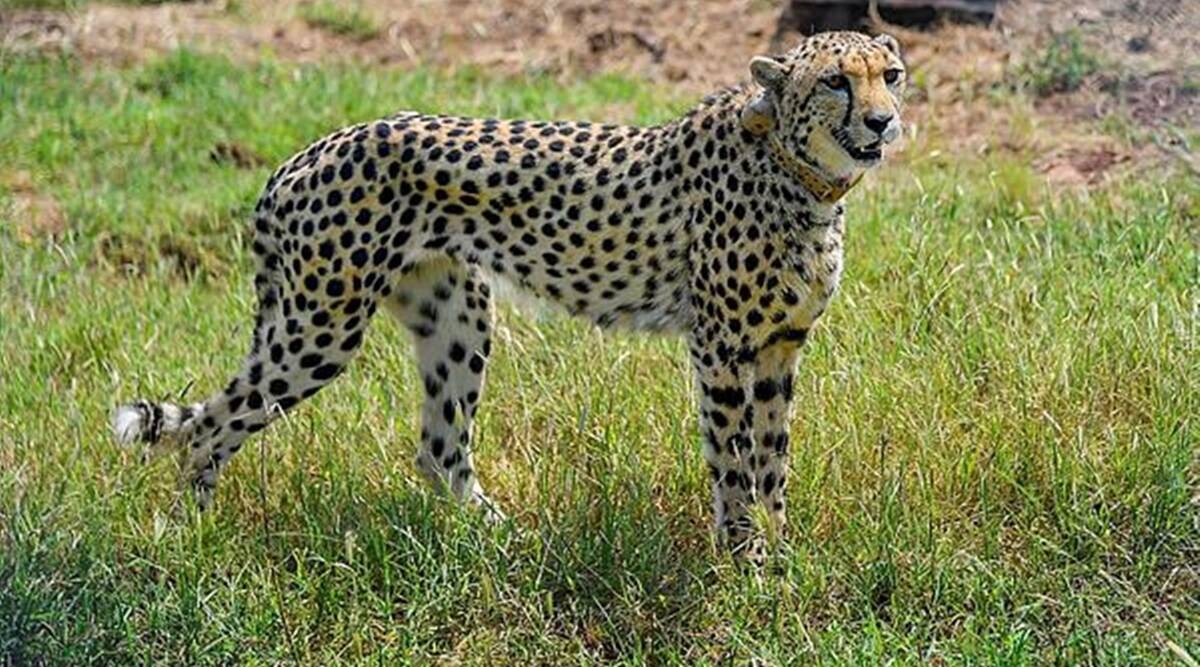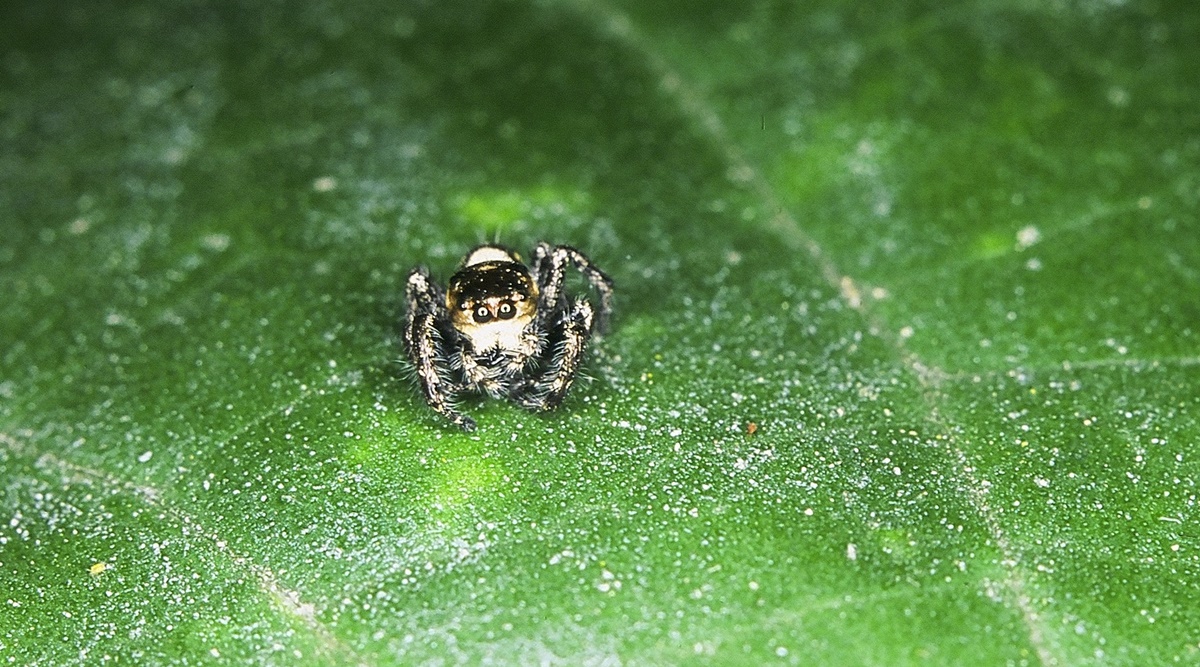Why animals kill, and it’s not for a trophy
Unlike us, there is no ridiculous preening and posturing after a successful kill, with boots and rifle stock on the body of the victim
 There is no malice involved in cheetah hunts. Source: Vinod Tiwari/Wikimedia Commons
There is no malice involved in cheetah hunts. Source: Vinod Tiwari/Wikimedia Commons Few of us have been fortunate (if one can use that word!) enough to watch a hunt in the wild: whether it is a tiger taking down a chital, lions setting traps for wildebeest, leopards ambushing wild boar, or dholes chasing sambhar to exhaustion. But wildlife TV channels are replete with these hunts and you always watch them with mixed feelings.
A cheetah hunkering low in the golden grass, its burning amber eyes fixated on its target ahead – say a blackbuck (now that cheetahs have come to India, why not?) stalking it, step by infinitesimal step, freezing when its quarry warily looks up from grazing and then, belly to the ground, moving, till it is in striking distance. Then the phenomenal acceleration that would put a Ferrari to shame, as it explodes from cover and launches its attack. You’re cheering it on, yes go – go – go! As the quarry flees, swerving from side to side, eyes rolling, the cheetah follows, using its tail as a counterbalance to the lateral movement, trying to get close enough to trip its victim up and bring it down.
 A Cheetahs in Madhya Pradesh. (Photo: PTI/File)
A Cheetahs in Madhya Pradesh. (Photo: PTI/File)
At top lick it hits nearly 100 kmph – but there is a catch: it can only maintain that maximum for a few seconds. If the quarry can keep out of reach for 30 seconds, it’s all over for the hunter and it is forced to pull up, panting heavily. But if it snags its quarry which takes a tumble, then the victim is done for. You see the frantically kicking legs hear the despairing bleats as the quarry struggles as the cheetah fixes its teeth on its throat. If it is able to hold on until the quarry’s eyes glaze over, well dinner is served.
And as you’re cheering the cheetah on, another part of you is simultaneously gunning for the blackbuck! Go, go, just keep on going for a few more seconds, then Speedy Gonzales will run out of gas and you can pull up and wag your tail at it in derision as it sits on its haunches and heaves!
The same reactions happen for most big cat hunts. Lions set devious traps, first encircling their quarry then driving it into the ambusher ready and waiting. You can only admire their tactics as they take full advantage of the terrain – while at the same time want to yell out at the quarry – no, no, not that way you moron – there’s an assassin just ahead.
Usually, the kill is completed very quickly, but sometimes the hunt and the kill seem more like sieges, especially if the quarry is massive – an elephant or buffalo. The quarry is first separated from its herd then harassed to exhaustion before being launched upon by the lioness’ hunting party – often accompanied by their lion lord. Wild dogs work deviously in relays, and orcas gang up in hunting teams (even dislodging their victims from ice-floes by collectively creating tidal waves), which is really not fair but then their objective is not ‘sport’ but to get dinner.
A peregrine stooping after a rock dove, or a magnificent eagle winging swiftly behind a crane, thrills as much: again, you’re rooting for the hunter while breathlessly hoping the victim will get away.
To the credit of the prey – they escape most times (estimates vary vastly.) The jungle’s alarm system (monkeys and birds up in the trees) more often than not give the game away and the predator is left frustrated and furious. Sometimes it’s the predators own cubs which wreck the hunt, by their tomfoolery, much to their mother’s exasperation. Among the predators with the best success rate are wild dogs with a 67-85 per cent score. So, really, it is one up for the prey!
 The insect world and spiders are far more diabolical when it comes to hunting. (Photo credit: Ranjit Lal)
The insect world and spiders are far more diabolical when it comes to hunting. (Photo credit: Ranjit Lal)
The insect world is far more diabolical, and here your sympathies lie squarely with the victim. Many species of wasps pounce on and sting their victim – say a caterpillar or spider, paralyzing it with venom. It is dragged into a burrow where the wasp lays an egg on the stupefied quarry, backs out and seals the entrance. The larva that hatches, burrows itself into its victim’s body and begins eating it inside out – but leaving intact all the vital organs – because it needs its meal to be alive and fresh. Eventually, only the husk of the victim is left and a spanking new wasp emerges from its nursery ready to continue the good work of its parent!
Ants are often regarded as one of the most efficient and deadly of predators, but they, too, fall victim to some pretty nasty underhand tactics. The spores of the Cordyceps zombie fungus invade the brains of carpenter ants forcing them to climb to the top of a plant and remain fixated there, while the fungus eats it alive from inside – and then ghoulishly, extends a tendril through its victim’s head in order to release more spores (to infect more ants!) into the air.
Snakes are ruthless predators and some are armed with super-senses like heat detecting sensors and so can hunt in pitch-darkness. All it takes is one lightning strike – then they draw back and simply wait for their venom to take effect before moving in to swallow the victim whole. Pythons and anacondas are not as merciful, wrapping their victims in their coils and then slowly squeezing the life out of them.
There is no malice involved in these hunts: they are just animals trying to get a meal for themselves and their young. And unlike us, there is no ridiculous preening and posturing after a successful kill, with boots and rifle stock on the body of the victim who never had a hope in hell. And we call this “sport”.
- 01
- 02
- 03
- 04
- 05































